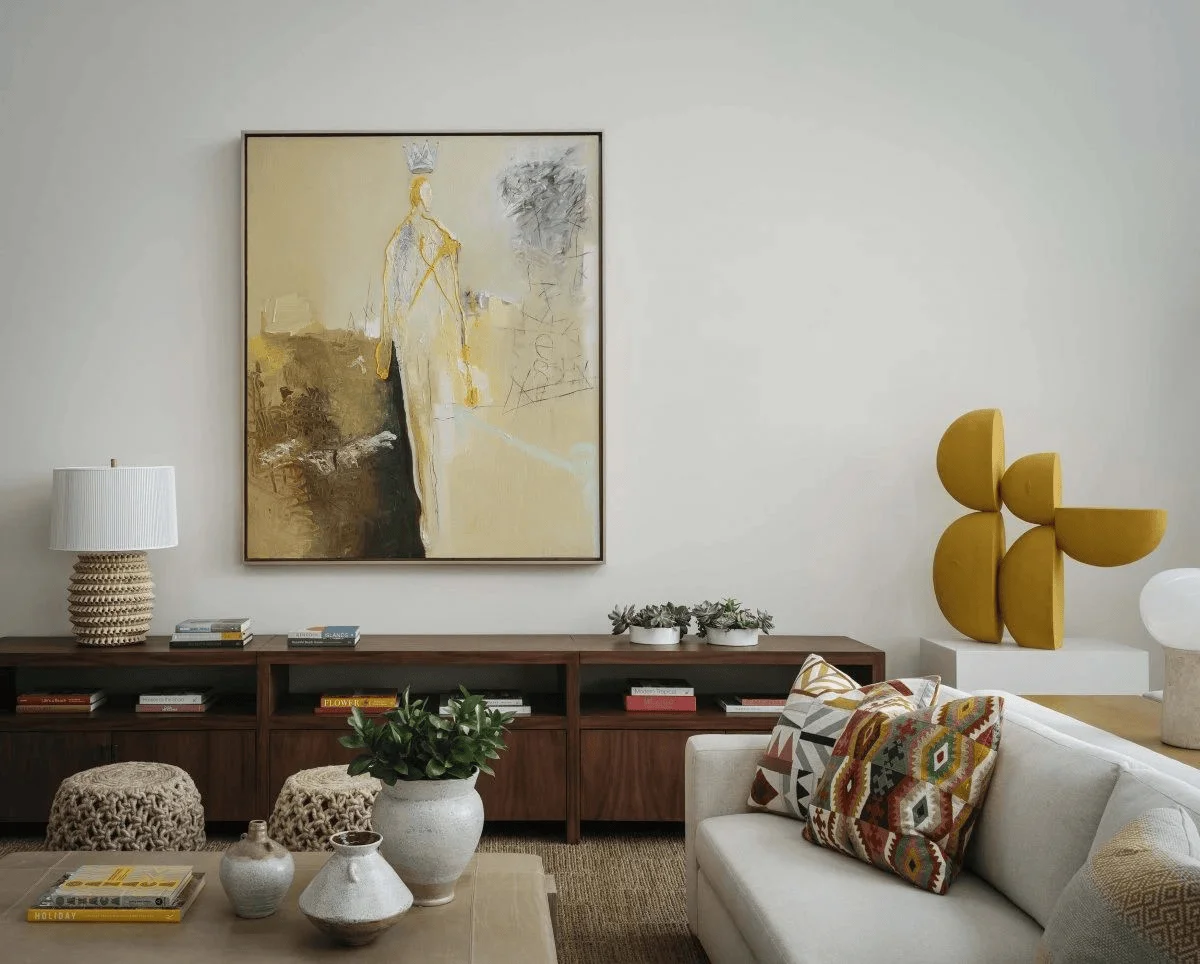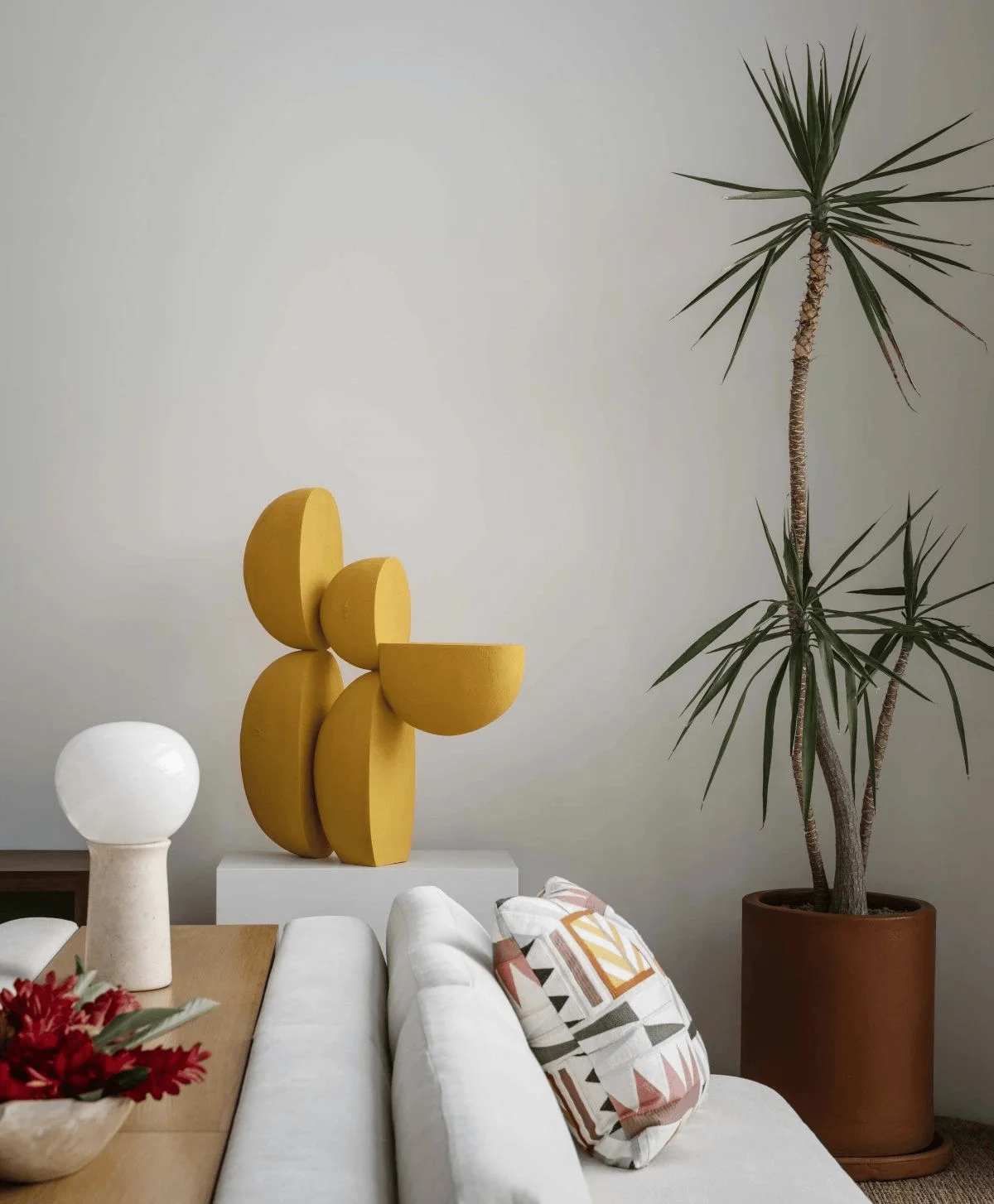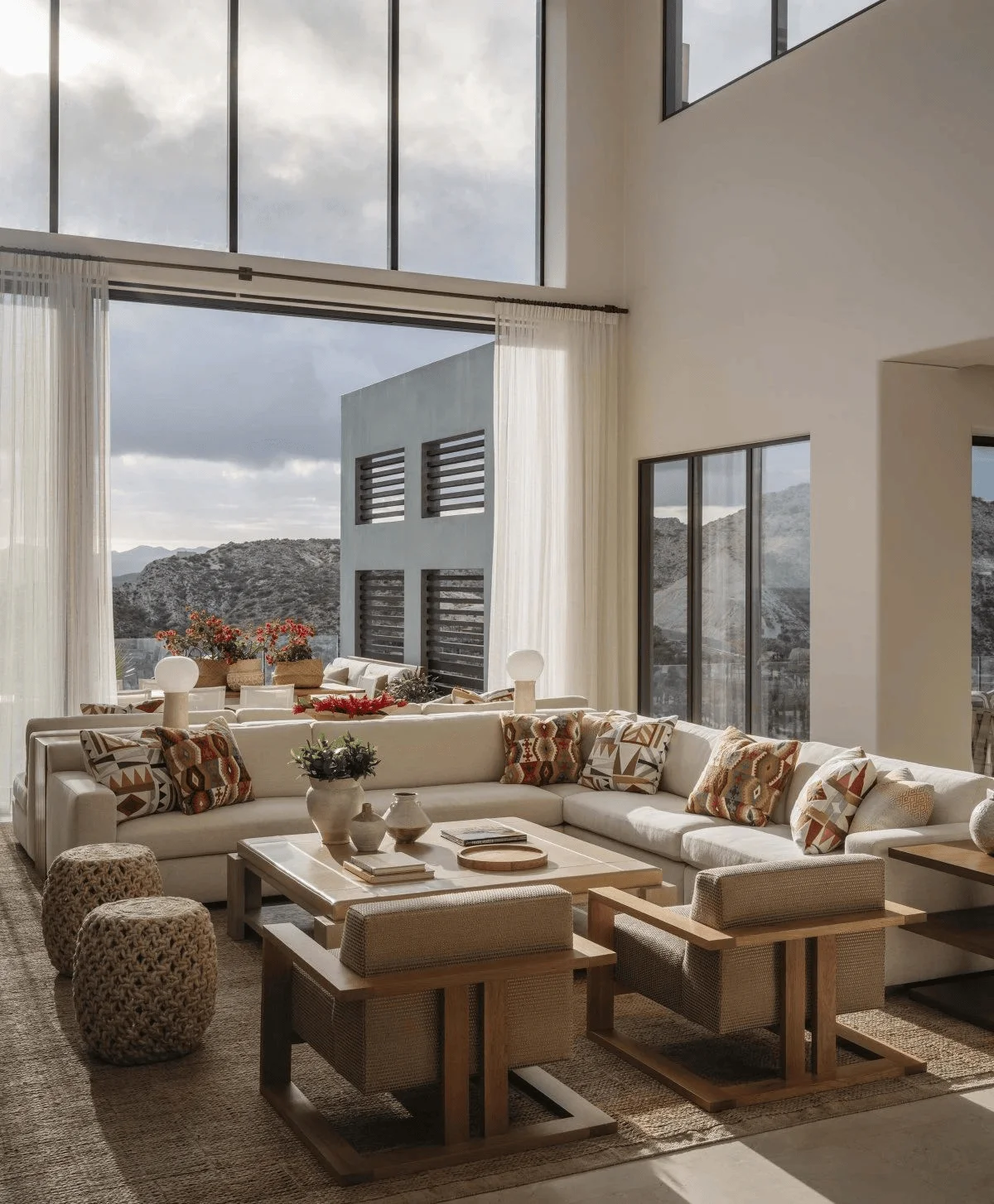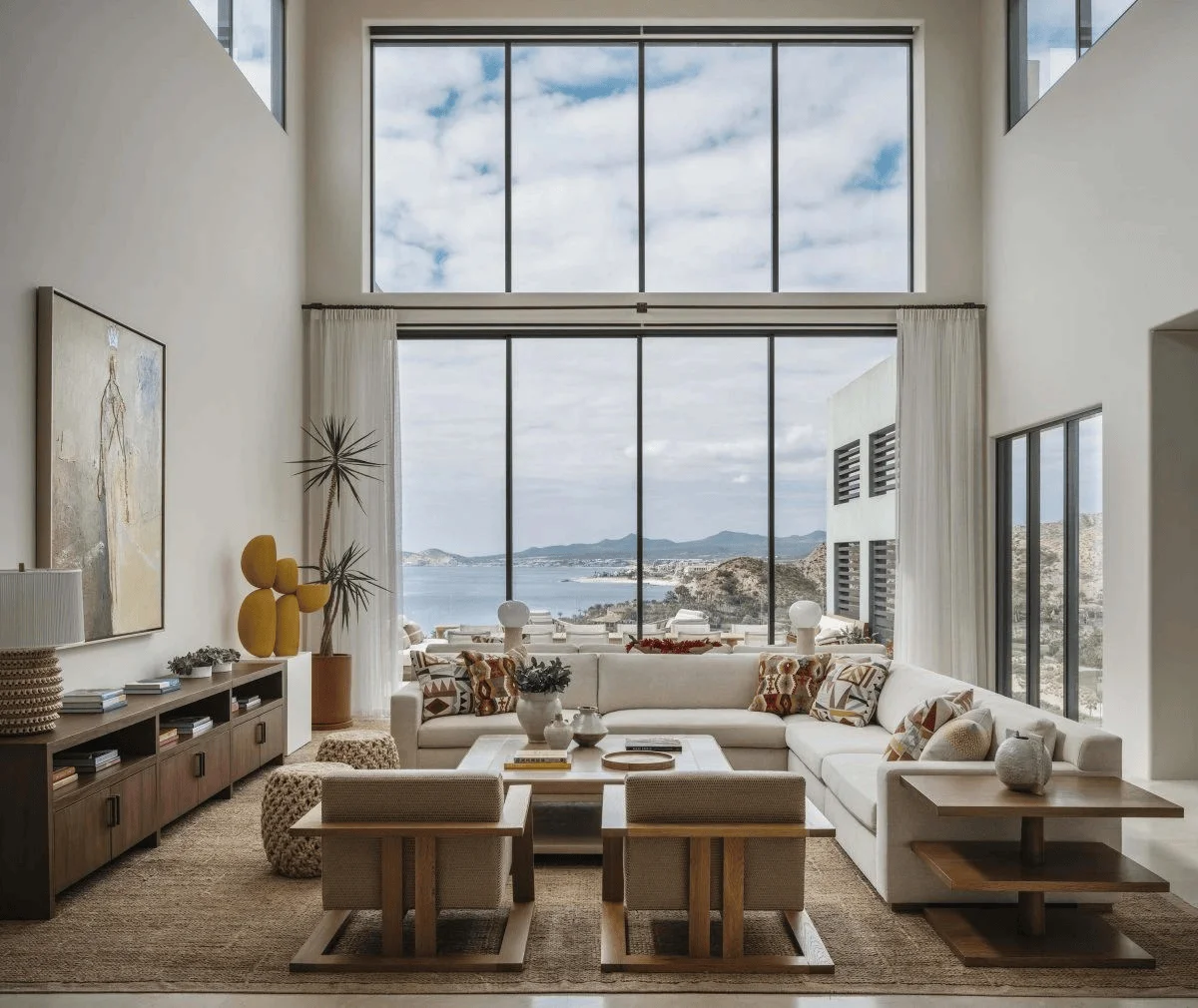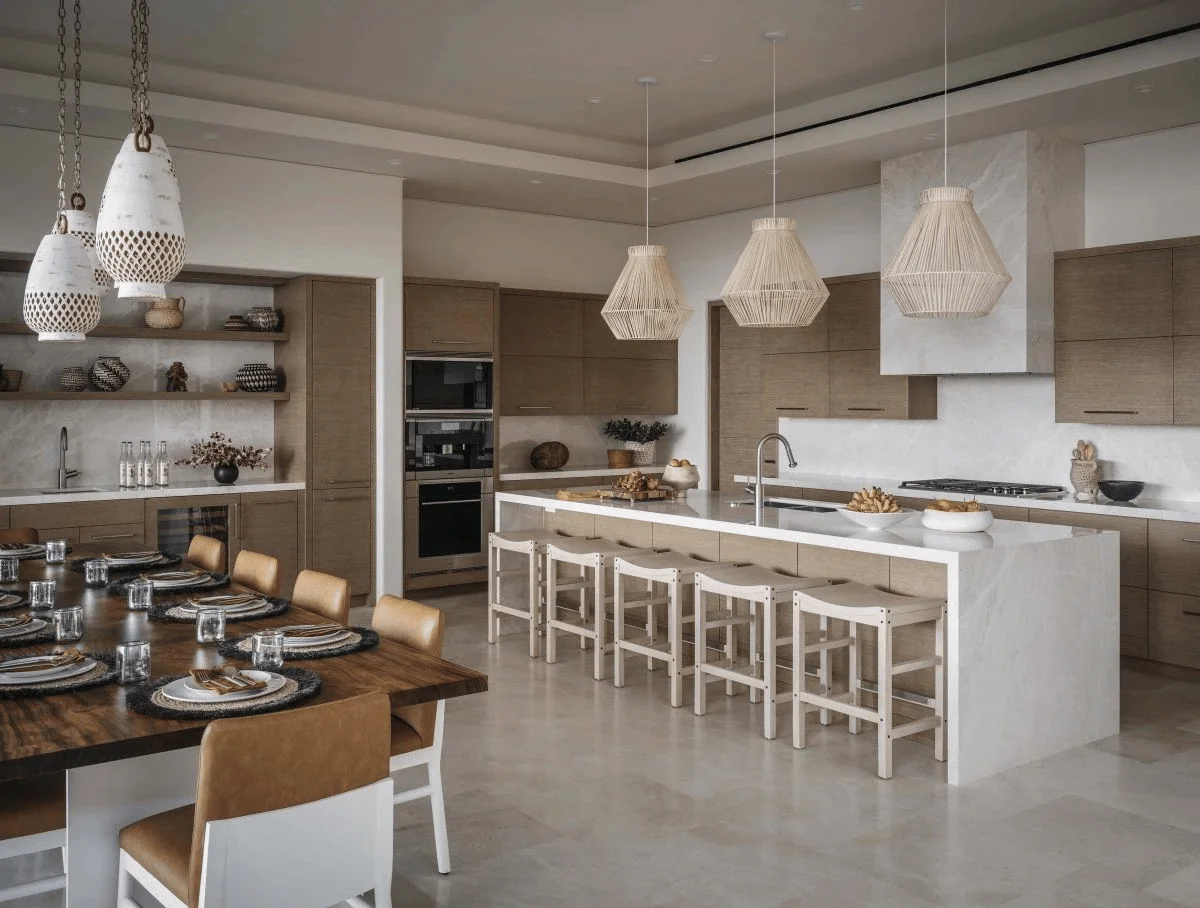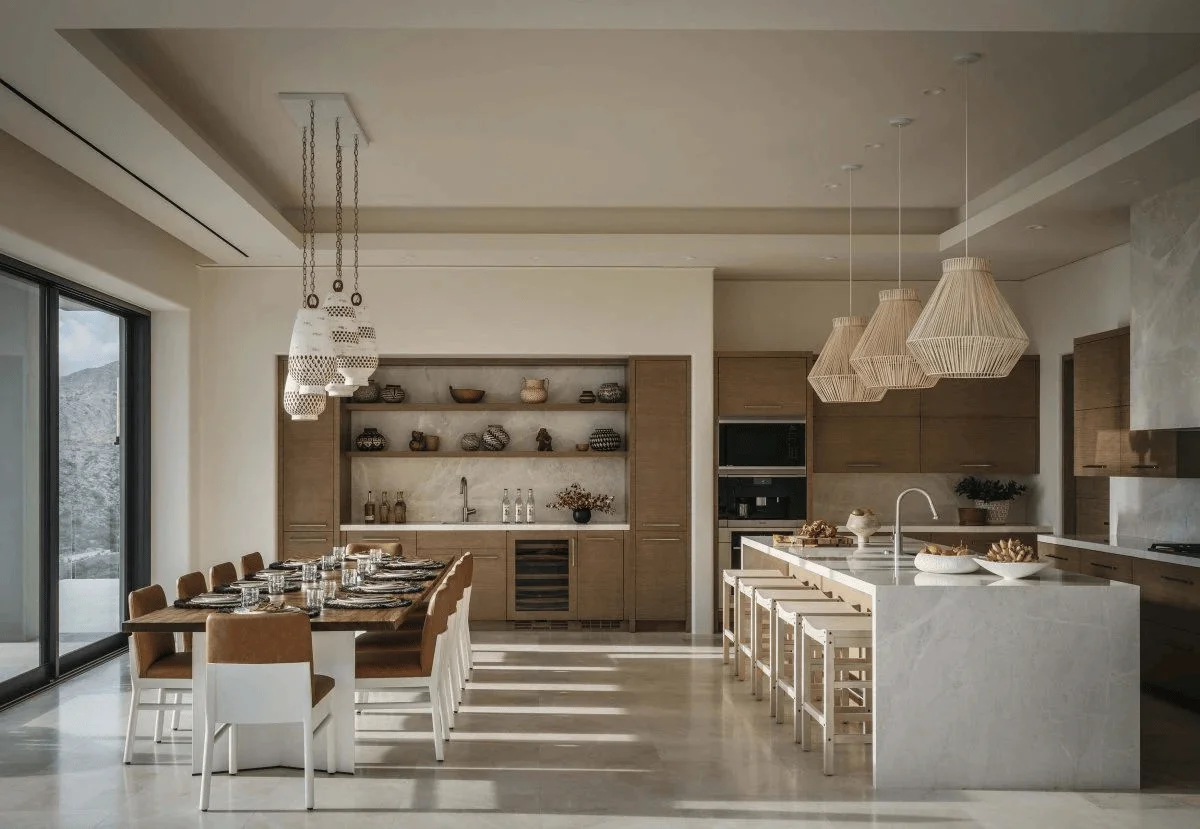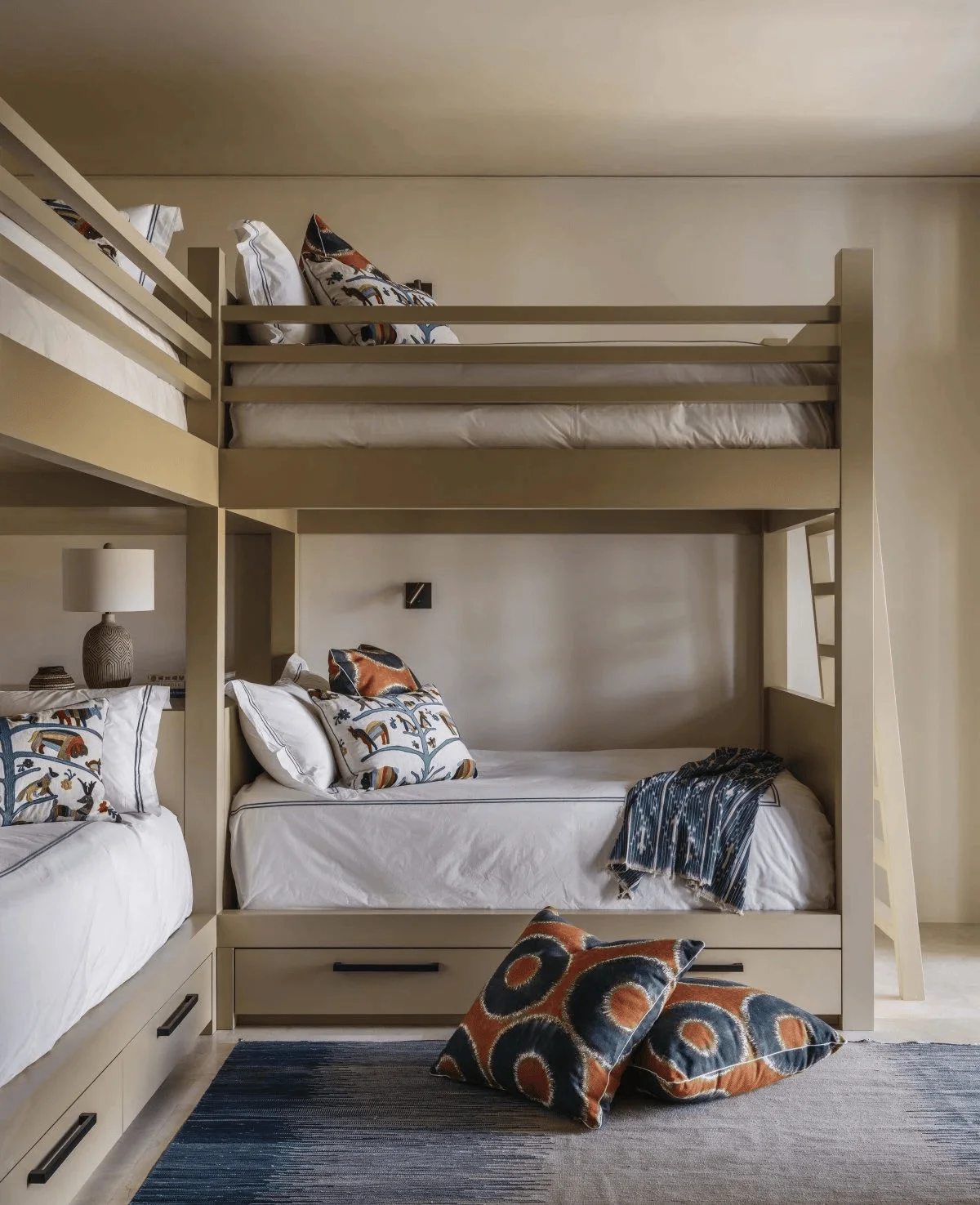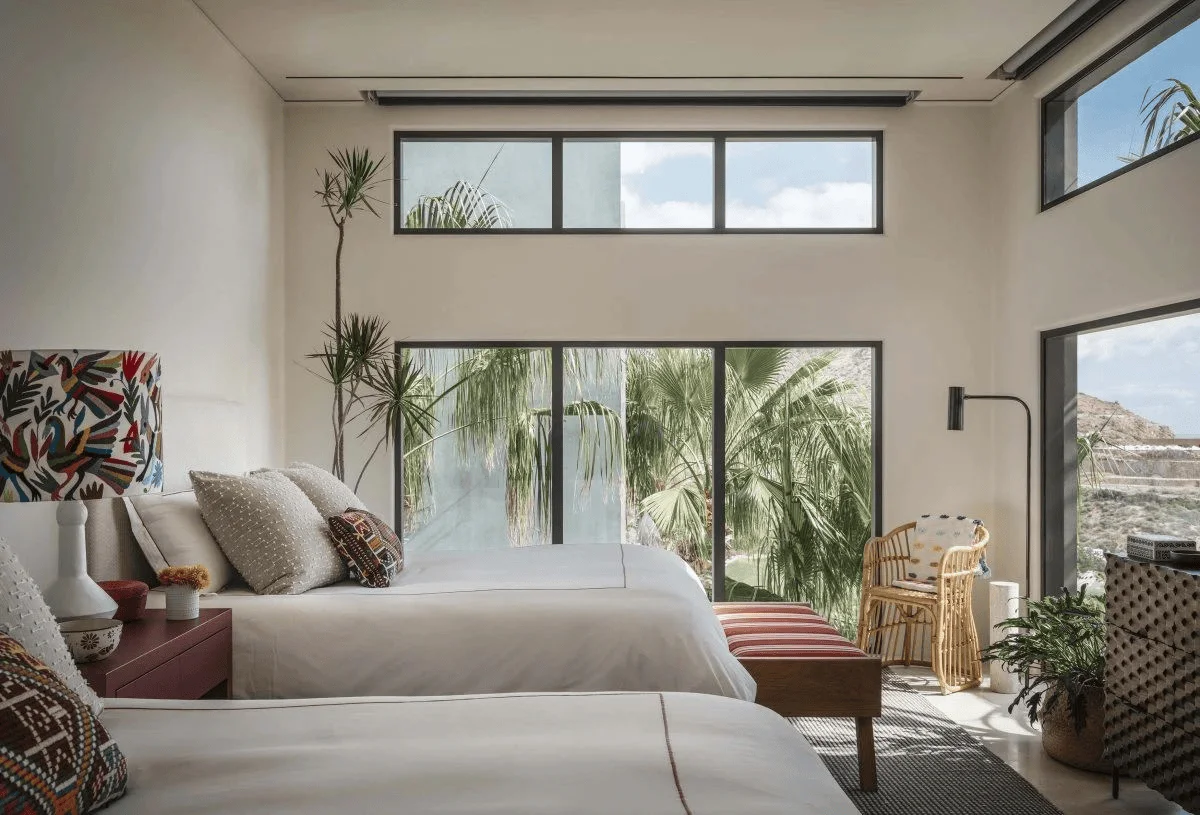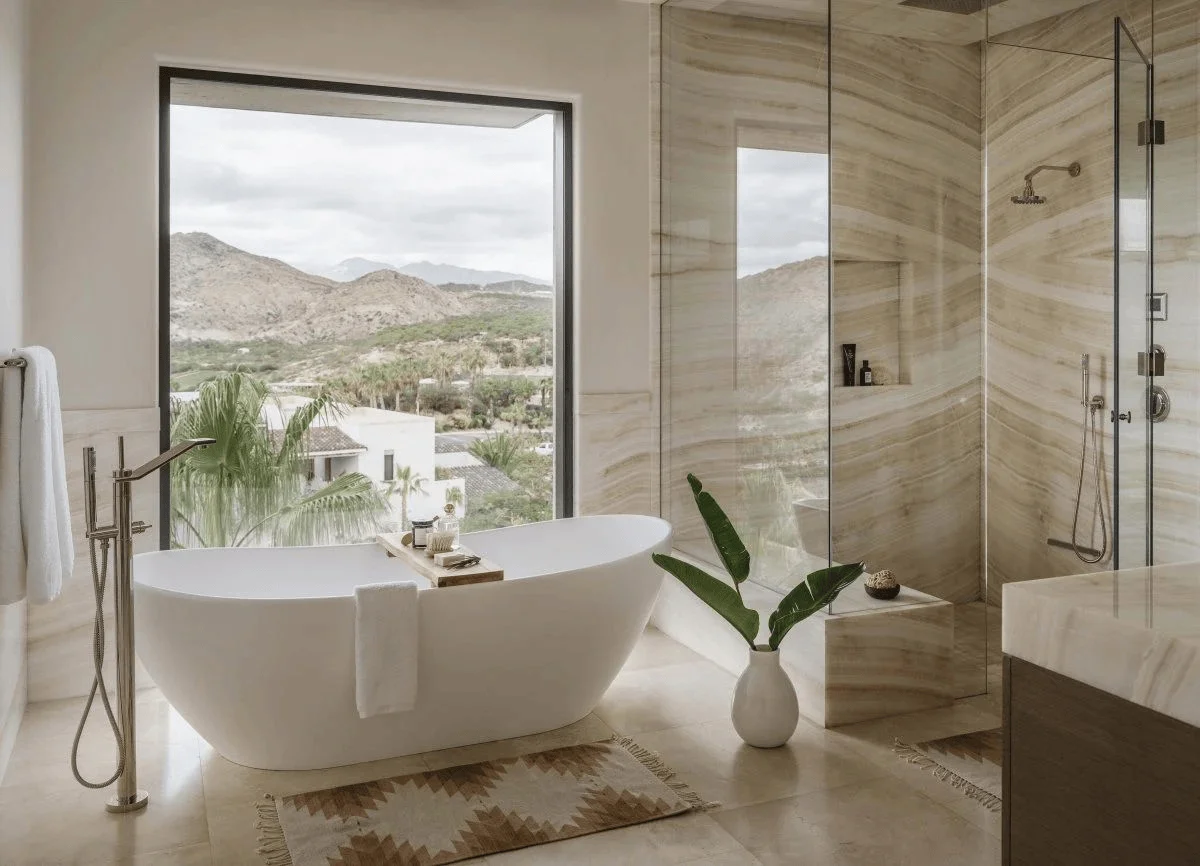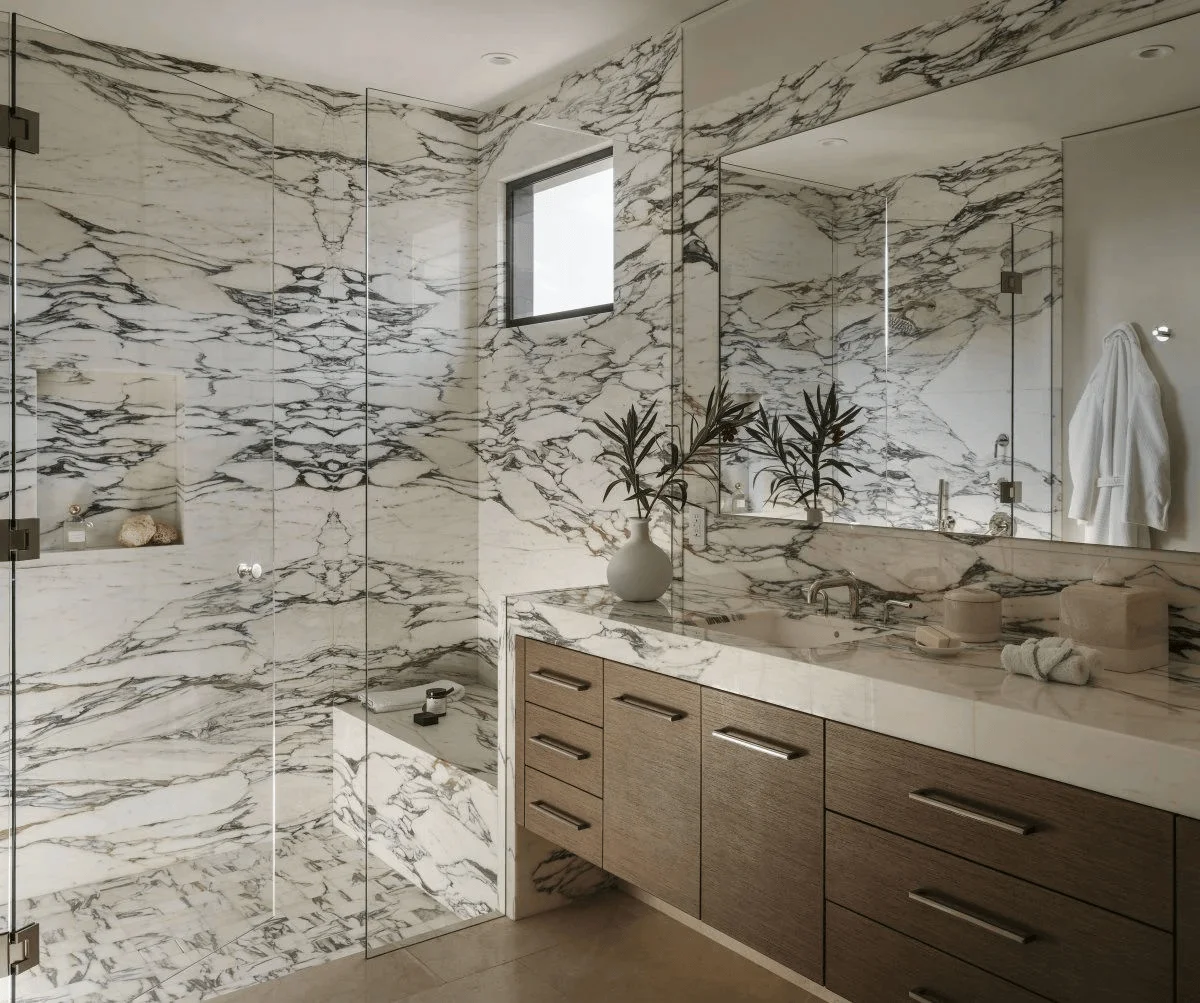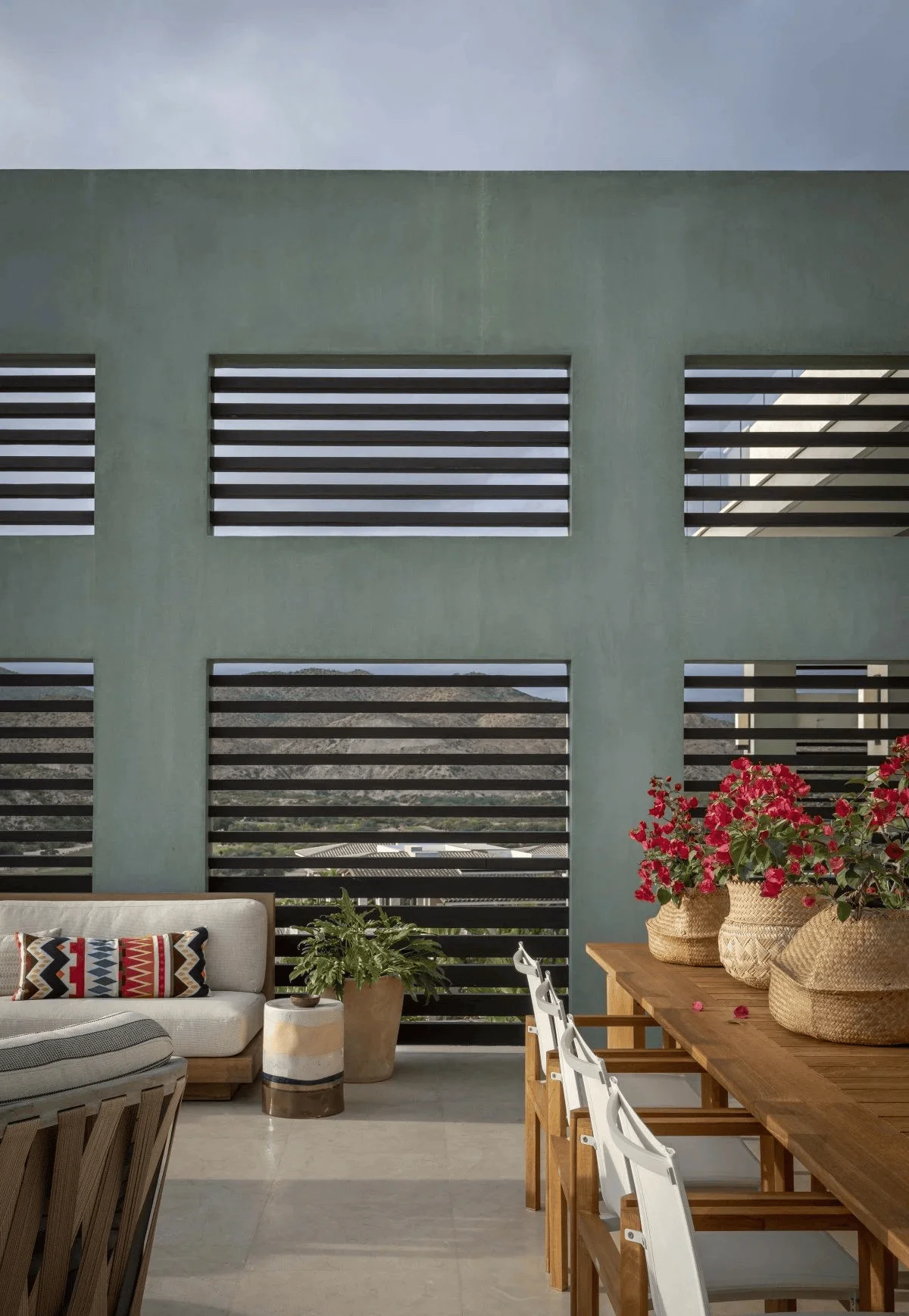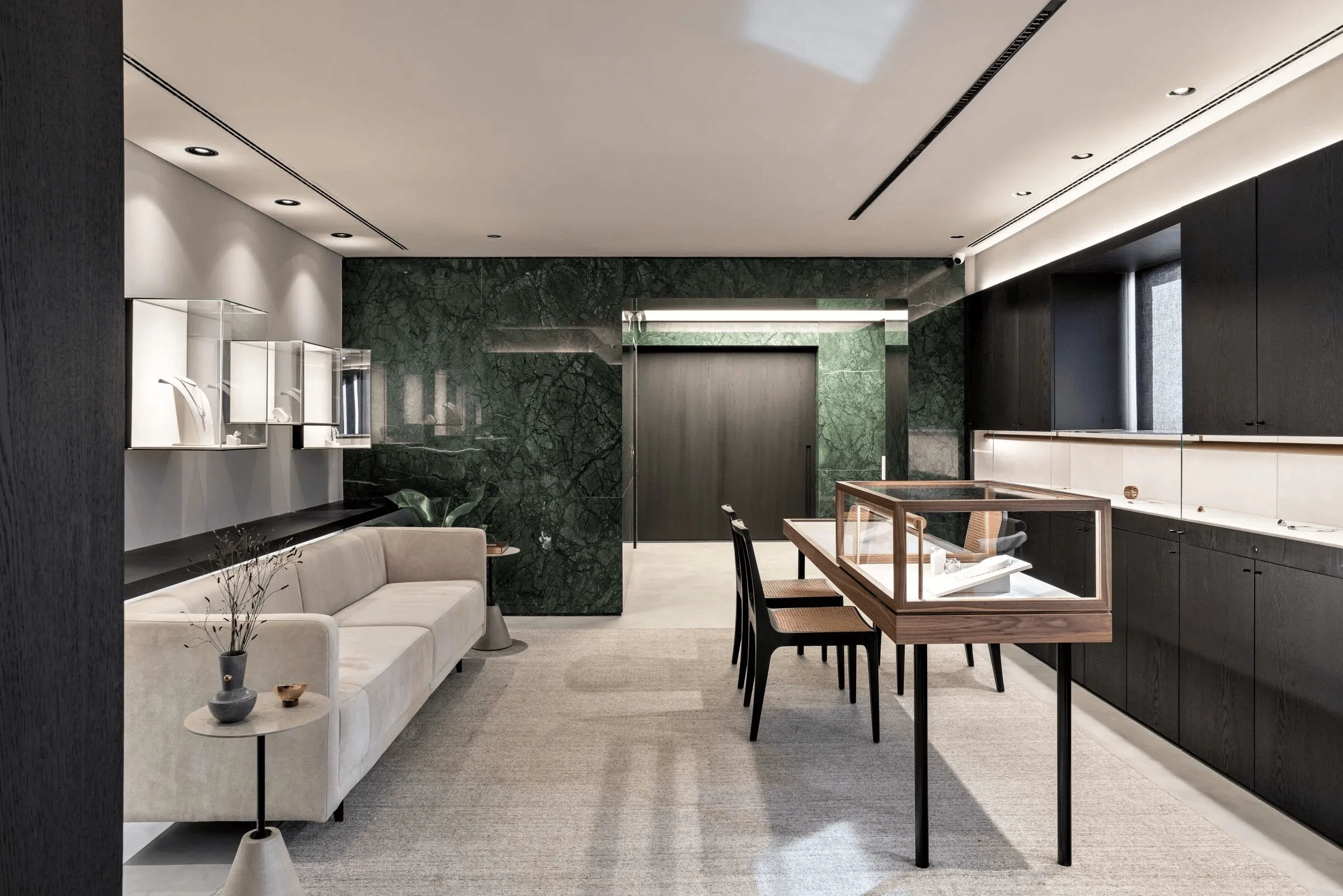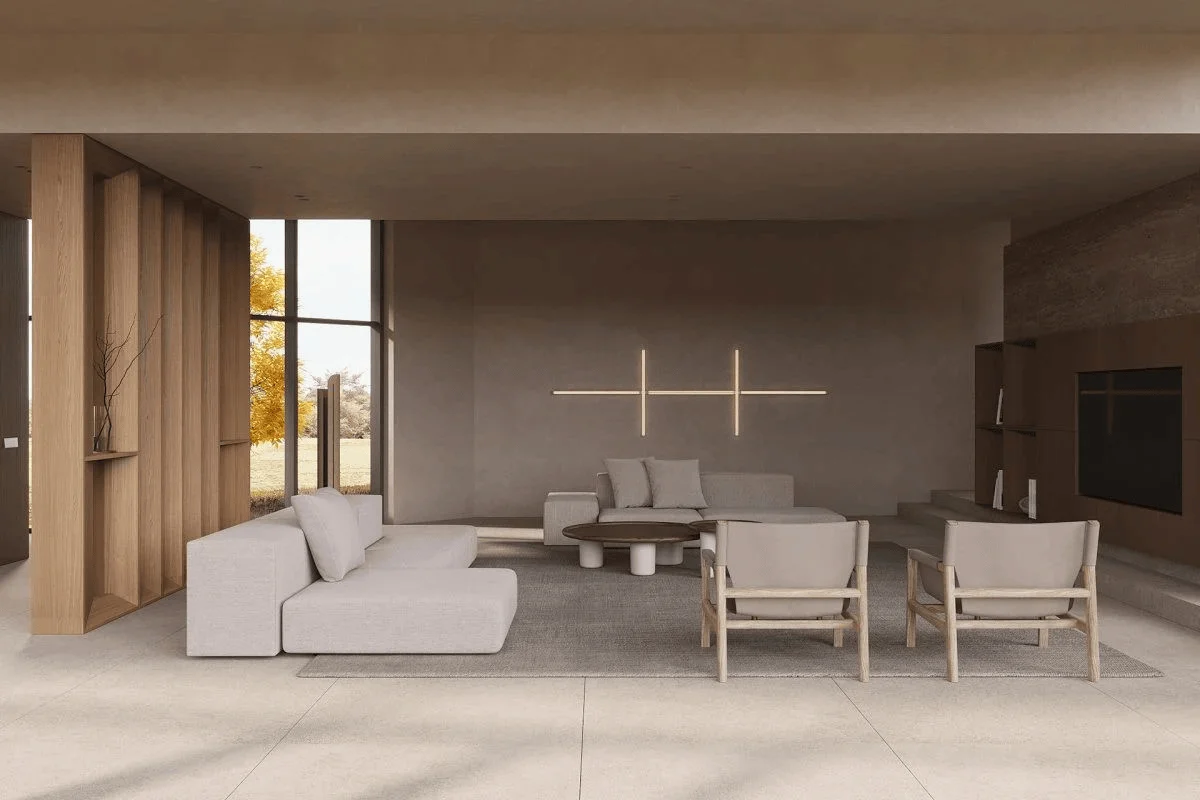Casa Punta Pescadero residence in Mexico features a modern design with handcrafted elements.
Contents
Project Background
The Casa Punta Pescadero Residence is a 10,200-square-foot dwelling situated atop a hill in a resort development in Mexico. This multi-family residential area includes four-story buildings, each divided into two residences. The client’s residence occupies the third and fourth floors and includes a rooftop outdoor space. This residential project features a modern interior design with handcrafted elements and warm natural materials, embodying the regional culture of Mexico. The design integrates locally sourced art pieces and handcrafted items that represent the cultural richness of the area. This project is a perfect example of how modern interior design can successfully incorporate cultural elements to create a unique and inviting atmosphere. Interior design with handcrafted elements is a key focus of this project, which is relevant to the long-tail keyword ‘handcrafted interior design’.
Design Concept and Goals
The design approach emphasizes a neutral color palette for the foundational furnishings, allowing the textures, materials, and cultural elements of the region to take center stage. The use of natural warm wood tones creates a calming and inviting space. The designers aimed to create a luxurious yet comfortable living space that embodies the vibrant culture of Mexico. They achieved this by incorporating handcrafted elements, traditional textiles, and local art into the modern design. The focus on handcrafted elements is a major component of the design, showcasing traditional arts and crafts while seamlessly integrating them with modern interior design. This project is a perfect example of how designers can integrate elements of culture and heritage into modern living spaces, which is related to the long-tail keyword ‘modern interior design with cultural elements’.
Layout and Spatial Planning
The residence is thoughtfully designed to maximize natural light and offer stunning views of the surrounding environment. The open-plan layout facilitates a seamless flow between the living spaces and encourages interaction and connectivity. The spatial planning is optimized to create a sense of openness and interconnectedness between the different zones, allowing for a fluid transition from one area to another. The interior design also considers the flow of movement through the different spaces, incorporating strategically placed elements to enhance the user experience. This exemplifies how spatial planning plays a crucial role in crafting a comfortable and inviting atmosphere in modern residences, which is relevant to the long-tail keyword ‘modern interior design layout’.
Aesthetics and Design Features
The aesthetic of the residence is a masterful blend of modern minimalism and traditional Mexican design influences. The use of natural materials and handcrafted elements creates a sense of warmth and authenticity. A key design feature is the incorporation of vibrant textiles and handcrafted elements throughout the space. For instance, bold patterned fabrics are used for benches, cushions, and daybeds, adding pops of color and culture. These handcrafted elements highlight the unique characteristics of the region while creating a visually engaging interior. This project showcases how modern interior design can successfully use textiles and handcrafted elements to create a visually stunning and culturally rich space. ‘Handcrafted interior design’ is a relevant long-tail keyword that is associated with this project and design style.
Materials and Sustainability
The material palette for the project prioritizes natural materials and sustainable practices. The use of warm wood tones throughout the interior design creates a sense of harmony with the natural environment. The choice of materials also reflects a commitment to sustainable practices. The furniture is primarily bespoke, and the soft furnishings are carefully selected to create a cohesive and inviting environment that aligns with the project’s sustainable design ethos. The incorporation of natural materials highlights the project’s commitment to sustainability. The long-tail keyword ‘sustainable interior design’ is related to the project’s focus on using natural and sustainable materials.
Cultural Significance
The residence reflects the rich culture of the region through the inclusion of locally sourced art and artisanal craft elements. The art pieces, textiles, and handcrafted objects bring a sense of the regional culture and heritage into the modern space. The designers collaborated with the clients to select and incorporate artwork from local artists, including Frank Arnold, showcasing the vibrant art scene of San Jose del Cabo. Indigenous woven baskets in the kitchen and a collection of animal masks in the bunk room celebrate the local culture and add character to the living space. This design approach demonstrates how a modern residential project can successfully incorporate elements of cultural heritage into its interior, which is relevant to the long-tail keyword ‘cultural interior design’.
Project Information:
Residential
Taller de Arquitectura
Mexico
2023
Wood, Textiles
Unknown


